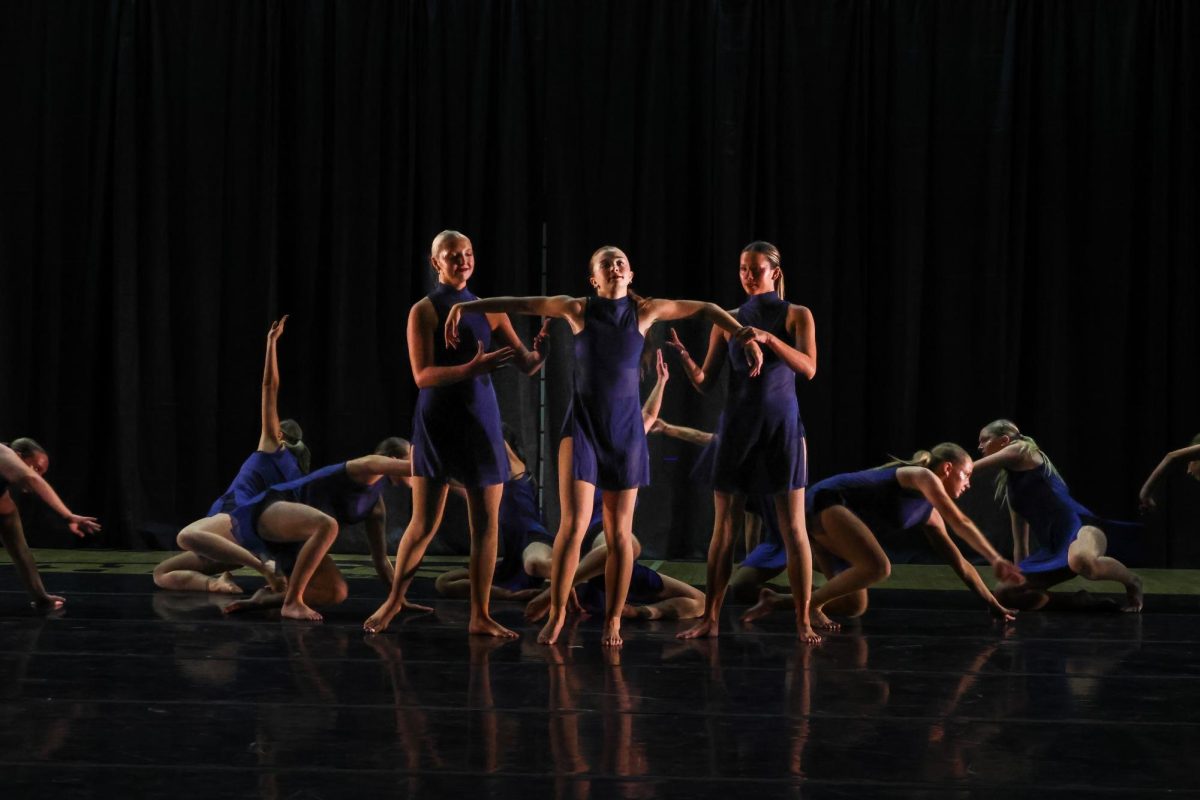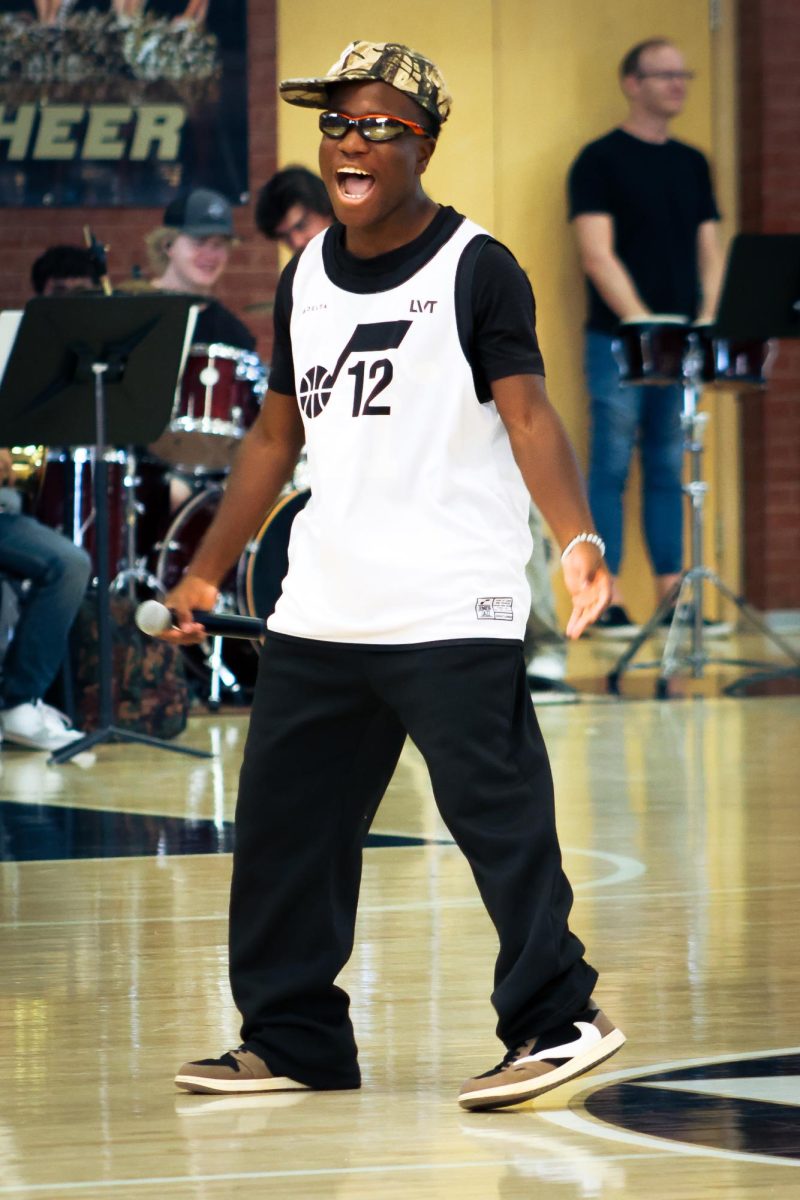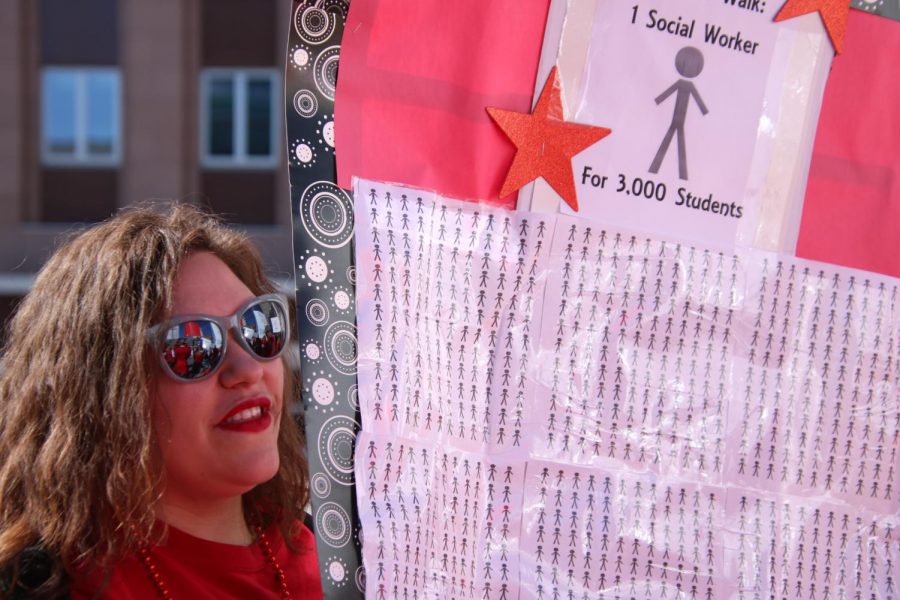Highland Teachers Walk Out for Education
Highland teacher Sarah Nichols marches with her sign down State Street.
March 3, 2020
In Friday’s warm sunshine, the streets of Salt Lake City ran red while the lights of police cars flickered as officers lined state street. Voices rose and fell, strong and unwavering, but most of all, united.
State Street has seen many signs up and down its pavement. It, along with the people living on its edges, have watched protesters march, shout, rally, and unite. On Friday Feb. 28th, the street was filled with educators.
Around 1,000 educators of Utah gathered at 1:00 at the Federal Building in downtown Salt Lake City, walking out of schools, wearing red and holding signs. After a march up State Street, teachers, and even students, crowded into the Capitol’s Rotunda to listen to speakers. The waves of red clad educators cheered and roared as teachers and students, some of which from Highland, spoke.
In red shirts and capes, teachers held signs with messages such as “our students matter” and “35: a speed limit, not a class size” to encourage a 6% weighted pupil unit increase for schools in Utah, $1,234 more for each kid. The Weighted Pupil Unit (WPU) is the foundation of Utah’s public education funding system, and currently, Governor Gary Herbert is proposing a 4% increase. Educators believe that this is not enough to properly fund schools.
“What we’ve been asking for right now is 6% increase, which still won’t get us even to the national average, but it’s a start,” Highland language arts teacher Creed Archibald said.
Highland teachers have heard what people think. They’ve heard the assumptions people have about why they want this pay increase, but they argue that the increase it is not about their salaries.
“We’re happy with our salaries, we actually are,” math teacher, Sarah Lea said.
With an increased WPU, schools can reduce class sizes, improve substitute coverage, increase mental health and behavioral support, improve counselor support, and expand para-educator support. According to Archibald, substitutes make around 75 dollars a day and a total of 10,000 dollars a year because of hours being limited. Similarly, para-professionals make around 15 dollars an hour and 16,000 dollars a year also because of limited hours. Improving all of these elements are a must according to teachers in order to help schools and education.
“Utah, for several years now has been ranked dead last, hence my sign that says ‘2020 class of dead last’,” Archibald said.
Archibald’s main reason for marching is to have enough money to pay for a school psychologist. Most schools in Utah don’t have on campus therapists or mental health counselors like other schools in the nation do. Currently, in Utah, there is one psychologist for every 1,950 students. Archibald says that they optimal, healthy ration would be one for every 250 students.
“I see so many students suffering because they don’t have the support they need at school,” Sarah Nichols, directed studies teacher at Highland, said. “Usually that’s mental health support because they have anxiety or depression and there is just not enough people to go around to help them.”
There are 648 students per school counselor, according to Nichols, which teachers find unacceptable. Lea finds it particularly difficult to understand as she has worked in other states where there were on-site school psychologists and social workers with consistently full offices.
Not only are students piling up in counselor offices, but classrooms are overflowing as well. Large class sizes make it difficult for teachers to give the students as much attention as they wish they could. Lea’s classroom has two columns of seven rows, each with three chairs, for a total of 42 total students. Her classroom is just one of many and teachers are doing everything they can to try and give students the individual attention they need to grow.
“I see these class sizes of like 36 kids, and there’s no way teachers can help all those people and I just see kids falling through the cracks,” Nichols said.
As class sizes grow, so do the problems that come with such low funding for Utah schools and education, according to Highland teachers. While this walkout shows the capital and students outright the needs of teachers, Lea says there has always been determination within Highland teachers to bring change.
“Every Friday, we have a group of teachers that goes up to the Capital and talks to our legislators,” Lea said. “We have lots of teachers who have written, we’ve invited them to come and sit in our classes and see the resources we have and how we’re struggling.”
Teachers at Highland, and from all over Salt Lake City, said they were done waiting for someone to come to them, so they took their message Friday, clad in red and holding signs to protest for what they believe will be a better future for education.
There will be no known result until the legislature finalizes its budget in the coming weeks.






























